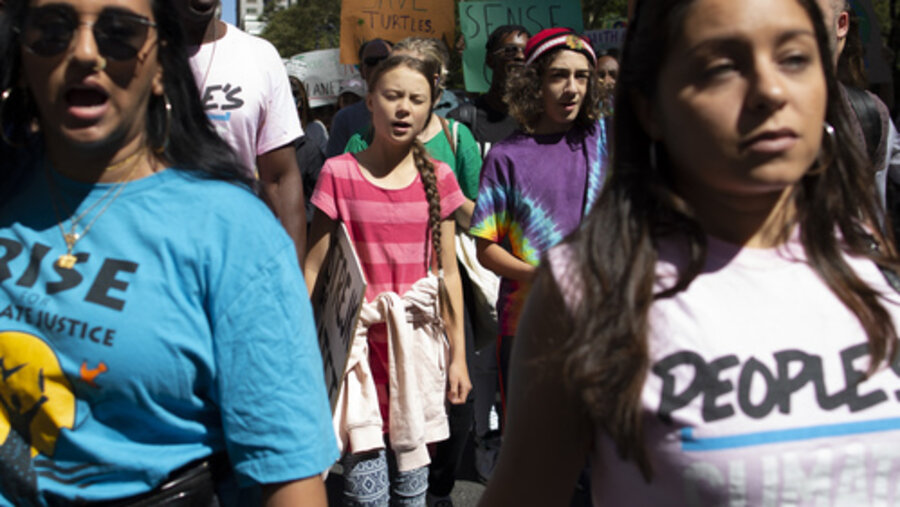Why youth are leading climate strikes
Loading...
From Hong Kong to Russia to Sudan, 2019 has been quite a year for youth-led activism. In the United States, students from Parkland, Florida, the scene of a gun massacre last year, keep setting a model for what young people can do. With a receptivity to simple truths, youth bring a purity to almost any cause – from national debt to democracy. It helps attract the attention of jaded adults. Children, after all, are the future. Now with many of them tapping into social media’s connective power, they want the rest of the world to know they are very present.
On Sept. 20, youth activism went global in a well-orchestrated “school climate strike.” In the spotlight during the marches and protests was 16-year-old Swedish activist Greta Thunberg. With moral clarity, she has challenged adults to truly love their children by changing their energy habits to avoid climate disaster. Even as she sounds an alarm, she also foresees a future free from harm. And that is the clarity. A childlike vision can help replace fear with freedom.
Today’s youth-led causes – often with assistance from adults – can trace their roots to the 19th century when children worked in coal mines and factories. In the 1950s and ’60s, youth were active in the U.S. civil rights and anti-war movements. A pattern has been established, especially in helping heal the rifts between generations over issues such as government debt, carbon pollution, and the steady erosion of civic freedoms and rights. In Hong Kong’s protests, young people are arguing with their elders as much as with Beijing.
Anger often drives adult-led protests. With so little political power, youth rely instead on their collective traits, such as an openness to truth and a willingness to expect good in their lives. Their activism comes out of an innocence that is often mistaken as naiveté. Yet it is innocence they seek, whether in preserving a pristine environment or the integrity of a democracy. They should not have to carry the weight of the world. But when they do, the future does not look so bleak.







